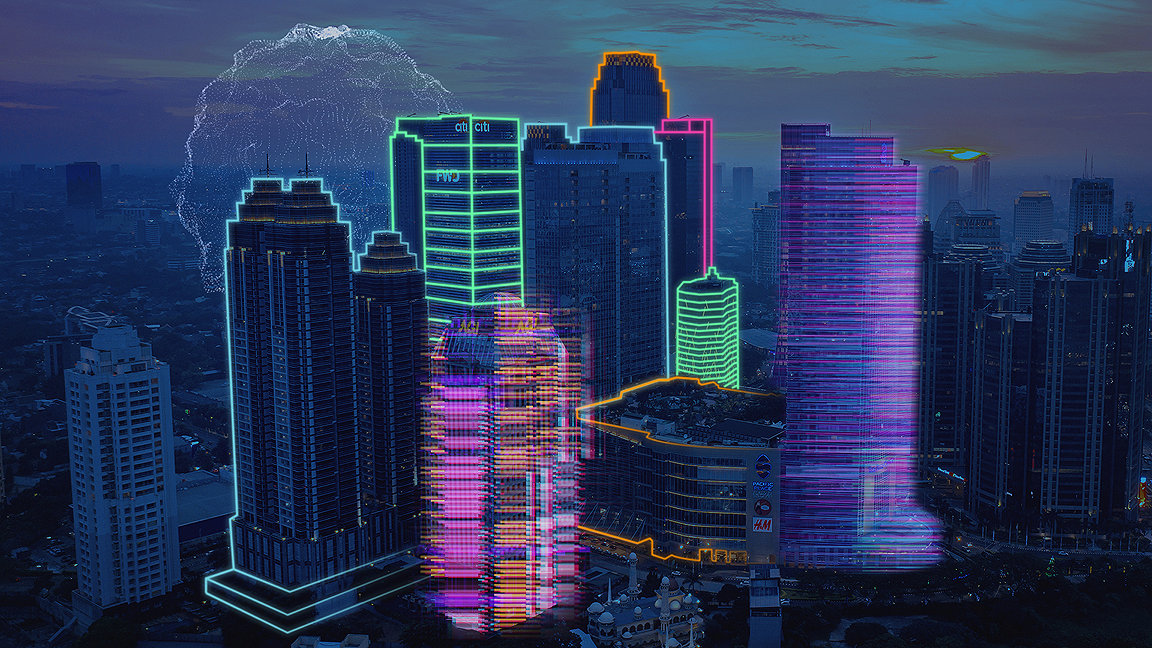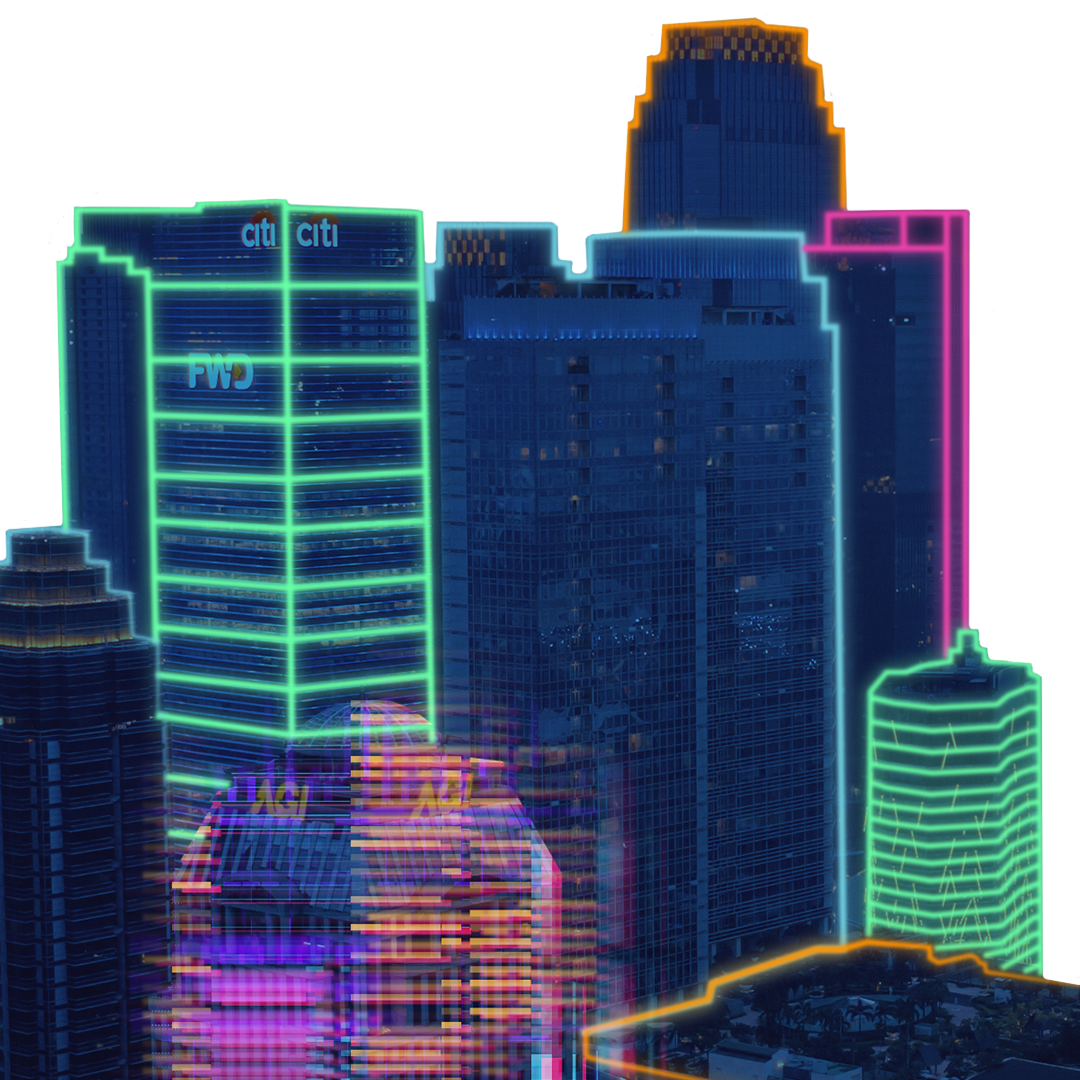
Illustration by Emily Black
Technology can make things better, easier, faster and greener, but people like to be in control.
In a world questioning how powerful AI technology will become and what it means for mankind, it is easy to forget that everyday office work is already controlled by many forms of technology.
Technology controls door entry, room temperature, knowing when meeting spaces and lockers are free, and measuring the number of people in the building. All with the end goal of an office environment that is comfortable for occupants and can hit sustainability targets. This is today’s ‘smart’ office building.
But does a building really need to be smart to manage these tasks? And can it get too smart, compromising performance and alienating its human users? A smart building “uses technology to gather data and connect systems, to provide services to its occupants and protect their personal data,” says Marie-Noelle Brisson FRICS, co-founder of CyberReady. An alternative view is offered by Alberto Saruggia MRICS.
The founder & CEO of Lombard Standard, Saruggia argues the smart building is not a new concept. “We can define any building as smart that methodically uses the most recent technology to achieve cost, comfort, and sustainability goals,” he says.
Being surrounded by the latest technology is all well and good, but what happens if that swipe under the tap doesn’t produce water or the wave to the sensor monitor doesn’t produce light? Occupants are left pining for a traditional tap or light switch, feeling frustrated as they wave wet hands in the dark, thinking technology has failed them.
“While buildings are responsible for huge amounts of emissions, there is no need for buildings to be smart to achieve sustainability targets,” says Dan Hughes, founder and CEO of Alpha Property Insight.
Saruggia agrees: “A smart building does not mean only new digital technologies; it also means manual activities such as strategic planning and construction techniques. A bricks and mortar wall provides great comfort and cost efficiency with temperature control and noise abatement. It’s labour intensive but performs much better and is more sustainable than any drywall or concrete wall.”
On the flipside, technology’s value in improving performance has clearly been shown to have numerous benefits, says Hughes. These include limiting space needed by managing the flow of people, meaning energy is reduced. And increasing efficiency so light or heat are best employed for those that need them.

“If a smart solution requires long instructions or ‘education’ for tenants, it is not that smart” Alberto Saruggia MRICS, Lombard Standard
Could tech become too smart, overriding its human controllers? The mere suggestion is labelled as “almost dystopian” by Geoff Parsons MRICS, strategic partnerships manager at Demand Logic. If a building doesn’t allow a reasonable change to be made, he says, then that will be the opposite of smart. “Instead, we should ensure analytics are working in the background to alert people when something has been overlooked or will soon become an issue,” he says.
As buildings become the digital platforms of tomorrow, the risks around using technology need to be considered more than ever before, says Hughes. He highlights issues such as hardware or software not being updated, and the problems caused by an interruption to power or connectivity.
The advancement of AI can help, although as it rapidly develops there is a possibility that what was a smart building in 2020 won’t be in 2025 and so won’t keep up with sustainability targets, says Saruggia. He adds: “In fact, the lack of global standardisation and fast obsolescence of devices are the biggest barriers to faster adoption of digital technologies.”
As more data is collected and hardware gets cheaper, and the ability to analyse data with AI gets more powerful, buildings will get smarter, says Hughes. “At the heart of a smart building is better engagement with it through technology – for example using an app or collecting and analysing data to identify ways to improve a building’s performance.”
As such, could occupiers be educated about how to use smart buildings? “If a smart solution requires long instructions or ‘education’ for tenants, it is not that smart,” says Saruggia.
Essentially, what a smart building should do is make the tenant’s life easier. “In the same way you don't need lots of training to use a smartphone for the first time, using a smart building should be instinctive. In many cases the user shouldn't even know the technology is there,” says Hughes
Regardless of whether a building works by human or technological means, the question is no longer what can be measured, more what should we measure, given tech can now monitor almost everything, says Hughes. “At what point does the data we collect become disproportionate or unethical?” he asks.
Hughes believes the answer will be decided on a building-by-building basis. “The role of property professionals in the future will include making judgements on what data should be collected to balance the building’s performance and the user’s privacy.”
As buildings become smarter and control more of their own functions, there is a question of what impact it has on occupiers psychologically. “This is becoming an increasing issue and certainly in some areas staff feel that they are being ‘tracked’,” says Moritz Spellenberg, architect and associate director of Llewelyn Davies.
However, specifically from a hospital perspective, ‘tracking’ can help, says Spellenberg: “It offers huge advantages in critical areas of hospitals, where access can be restricted, drug dispensing can be monitored or even equipment can be traced using new tracker systems built into the lighting system.”
CyberReady’s Marie-Noelle Brisson FRICS likens using smart technology to a trade-off. “Consider the trade-off between a convenient, efficient building, and a safe, private workplace. A new conversation must happen between landlords and tenants so the trust factor is elevated,” she says.
This brings up the issue of data governance on one hand and trust on the other. Brisson says these are key considerations about both systems and data. Tenants, as end-users of the space are reassured that their personal data is collected, protected, and managed properly.
It entirely depends on the technology being used and for what purpose, says Parsons. He adds: “There needs to be transparency on this to reassure occupiers that, for instance, sensors monitoring desk occupancy is purely there to improve energy efficiency or comfort. It’s not there so their boss can see how much time they are spending at their desk.”